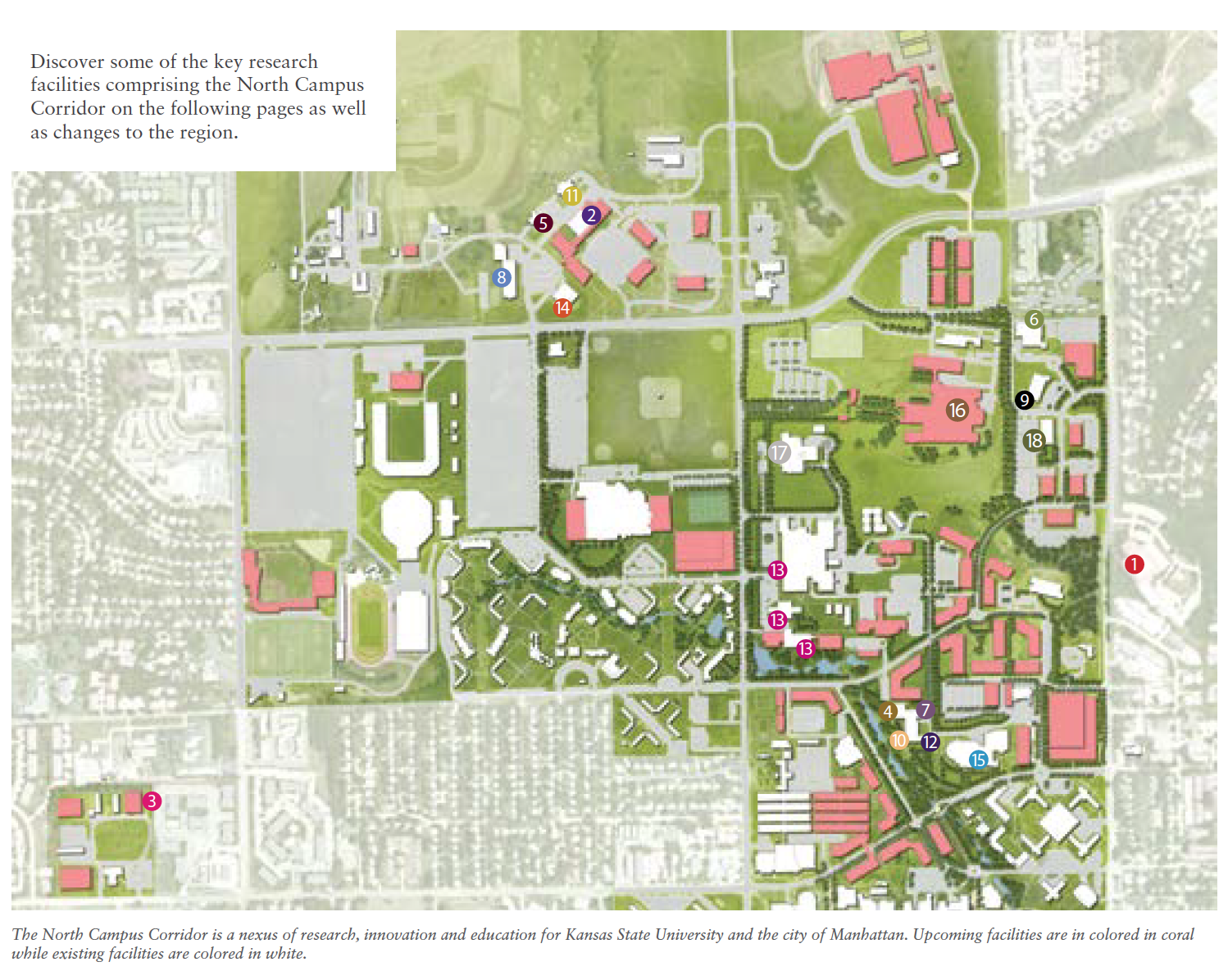University and city developing the North Campus Corridor for research, education, training
By Greg Tammen, Communications and Marketing
Kansas State University and Manhattan, Kansas, are quickly establishing themselves as a nexus for food and
bio-/agro-defense research and expertise.
The north section of the university's Manhattan campus houses the Biosecurity Research Institute, the colleges of Veterinary Medicine and Agriculture, the Grain Science Complex, the Kansas Department of Agriculture, and the upcoming National Bio and Agro-defense Facility, or NBAF — the U.S. Department of Homeland Security's foremost animal disease research facility — among several other world-class research facilities. Together, the region is a powerhouse for crop protection, animal health and food safety research.
Kansas State University and the city of Manhattan are working together to integrate the current and future development of facilities and infrastructure in this region of the campus through the North Campus Corridor Project. The corridor will serve as a hotspot of research, education and professional training. It networks the research facilities with the university's academic, intellectual property and athletic facilities as well as with future startup companies renting office and lab space in the corridor.
The North Campus Corridor is as much about research as it is about training students who will be the next generation workforce and helping grow the state’s economy, said Ruth Dyer, senior vice provost for academic affairs and chair of the North Campus Corridor Task Force.
"We're looking at the future needs of the university and the region and how we can address those needs with the North Campus Corridor," Dyer said. "The collaboration between the university and the city has been instrumental in creating a plan that will maximize the opportunities in the North Campus Corridor."
In part, the traditional research park model is changing, said Dyer, who recently attended a national meeting for land-grant universities. At the meeting, representatives from several universities with research parks discussed the challenges of static infrastructure as well as the parks' distance from campus.
"We are pursuing a slightly different model than what has been used in the past at other universities," Dyer said. "What is being designed here is a concept that facilitates shared resources, space and knowledge across multiple colleges, disciplines, facilities and partners. It also provides rental space and labs for some of the startups and entrepreneurs that NBAF will attract and space for students to intern with companies."
One of the more unique components of the North Campus Corridor is there is more than 1,700 acres of agricultural land adjacent to the northern edge of the corridor. While this land is not what may be considered as traditional lab space, the land serves as the research space for plant sciences and livestock.
"These acres of agricultural land are the research space for many faculty members in the colleges of Agriculture and Veterinary Medicine," Dyer said. "The university sees this land as a treasure and and a piece of who we are as a land-grant institution."

